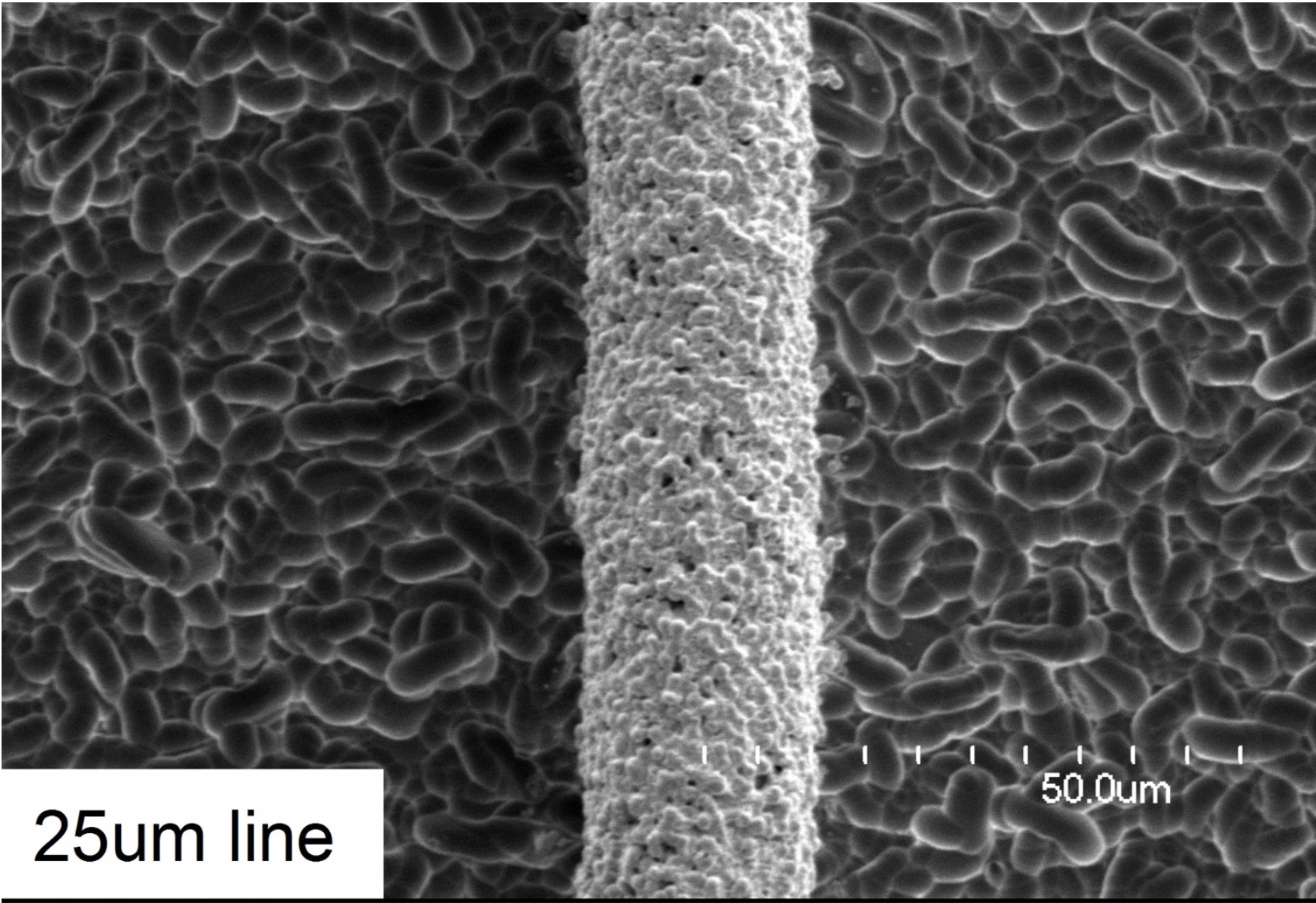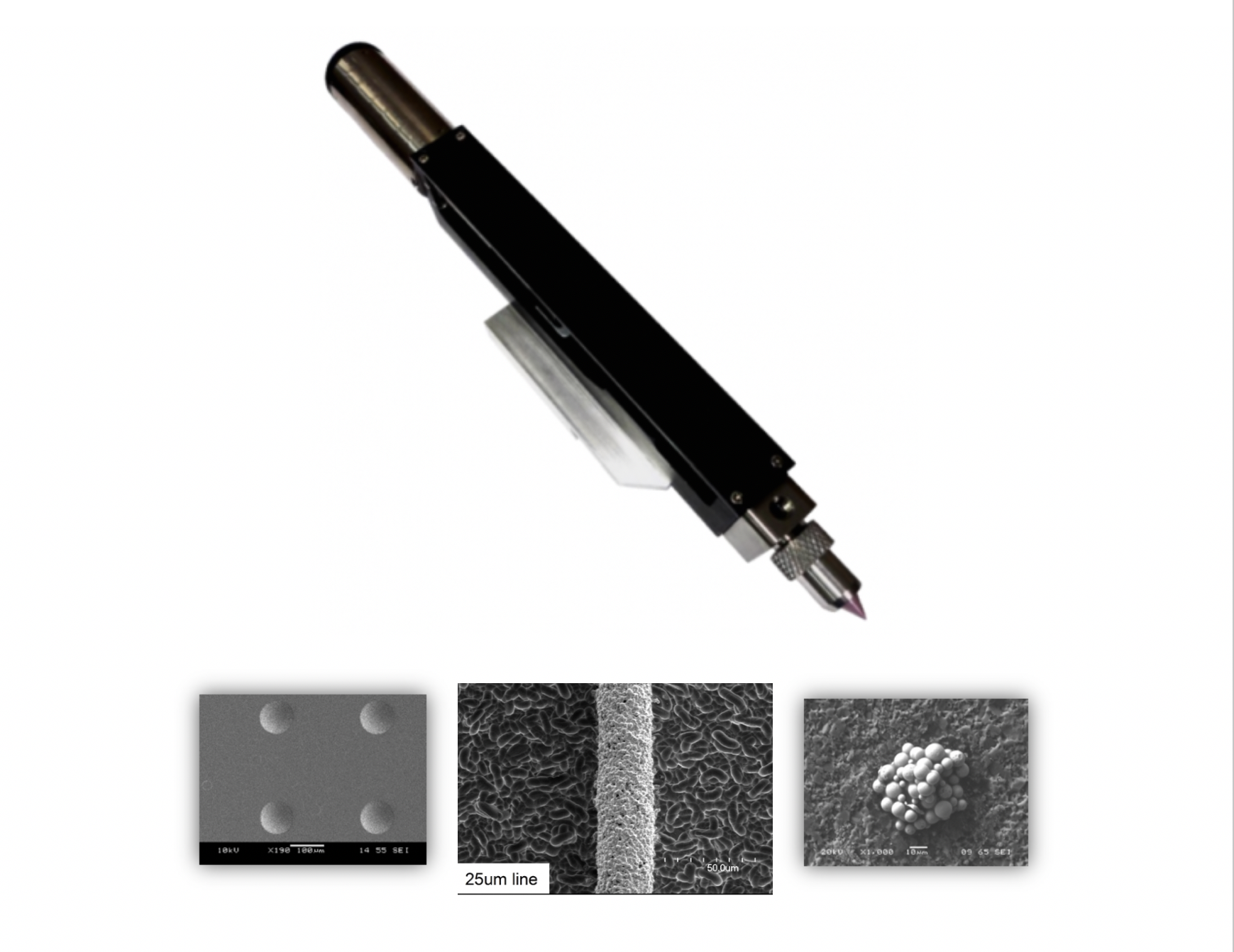High-precision micro dispenser manufacturer, nScrypt, has announced the successful 3D printing of solder and adhesive dots in the 50-micron range. Using its new SmartPump conical pen tip, the Florida-based company is able to precisely control the volume of material deposited from its state-of-the-art micro dispenser designed for electronics.
The achievement is expected to advance the manufacturing of 3D printed electronics and flexible hybrid electronics by allowing solder dots to be printed directly and precisely onto flat and irregularly-shaped electronics boards.

What is microdispensing used for?
Microdispensing is the 3D printing of pastes, inks and other fluids in exceptionally small volumes, typically in the picolitre or nanolitre range. Mechanically, it is similar to jetting technologies but dispenses fluids much closer to the substrate surface, resulting in much finer and more precise printed structures.
Microdispensing is critical in direct digital manufacturing, or the manufacturing of 3D printed electronics. Direct digital manufacturing involves both printing on planar or flat substrates, such as PCBs, and non-planar substrates, such as printed circuit structures. Printed circuit structures are constructed whereby the actual housing of an electronic device is also 3D printed from scratch alongside the adhesive dots which are found on the surface. Printed circuit structures tend to be irregularly-shaped due to the design freedom enabled by additive manufacturing.
nScrypt’s SmartPump
The nScrypt SmartPump is able to print more than 10,000 commercially available materials with a wide variety of mechanical properties, from water to peanut butter. The microdispensing tool has the smallest commercially available diameter on the market, measuring in at 10 microns. The valve rod housed in its body is what sets it apart from other tool heads, allowing it to precisely control volumetric extrusion.

The nScrypt team set out with the goal of printing consistent and repeatable 50 micron Type IX solder and adhesive dots. The experiment resulted in an average dot diameter of 51.24 microns with a standard deviation of 6.42 microns, or 13%. The result is considered a success given the extremely small volumetric quantities being 3D printed.
The experiment was conducted using the SmartPump conical pen tip in conjunction with Heraeus SAC305-8XM8-D Type IX solder paste and a silicone adhesive. The consistency in the results was achieved by controlling the valve opening, the dispensing gap, the lateral print speed (5 dots per second), the dispense time, and the air pressure of the pump.
The next step for the team is a large-scale adhesive dot study to test long-term reliability, frequency of clogging, and required downtime between long-term uses. The results of the test have been published in a paper titled “High-Density Microdispensing Solder And Adhesives Onto FHE And Conformal Substrate Assemblies”. It is co-authored by Sam LeBlanc, Jasmine Hammonds and Mike Newton, who made up the nScrypt test team.
nScrypt has previously developed a tool changer for its multi-head DDM systems, allowing for a seamless transition when printing electronics boards from scratch. The company also worked on the 3D BioFabrication Facility onboard the ISS, solidifying its presence in space as well as on the factory floor.
The nominations for the 2020 3D Printing Industry Awards are now open. Who do you think should make the shortlists for this year’s show? Have your say now.
Subscribe to the 3D Printing Industry newsletter for the latest news in additive manufacturing. You can also stay connected by following us on Twitter and liking us on Facebook.
Looking for a career in additive manufacturing? Visit 3D Printing Jobs for a selection of roles in the industry.
Materials micro-dispensed with nScrypt’s SmartPump. Image via nScrypt.



